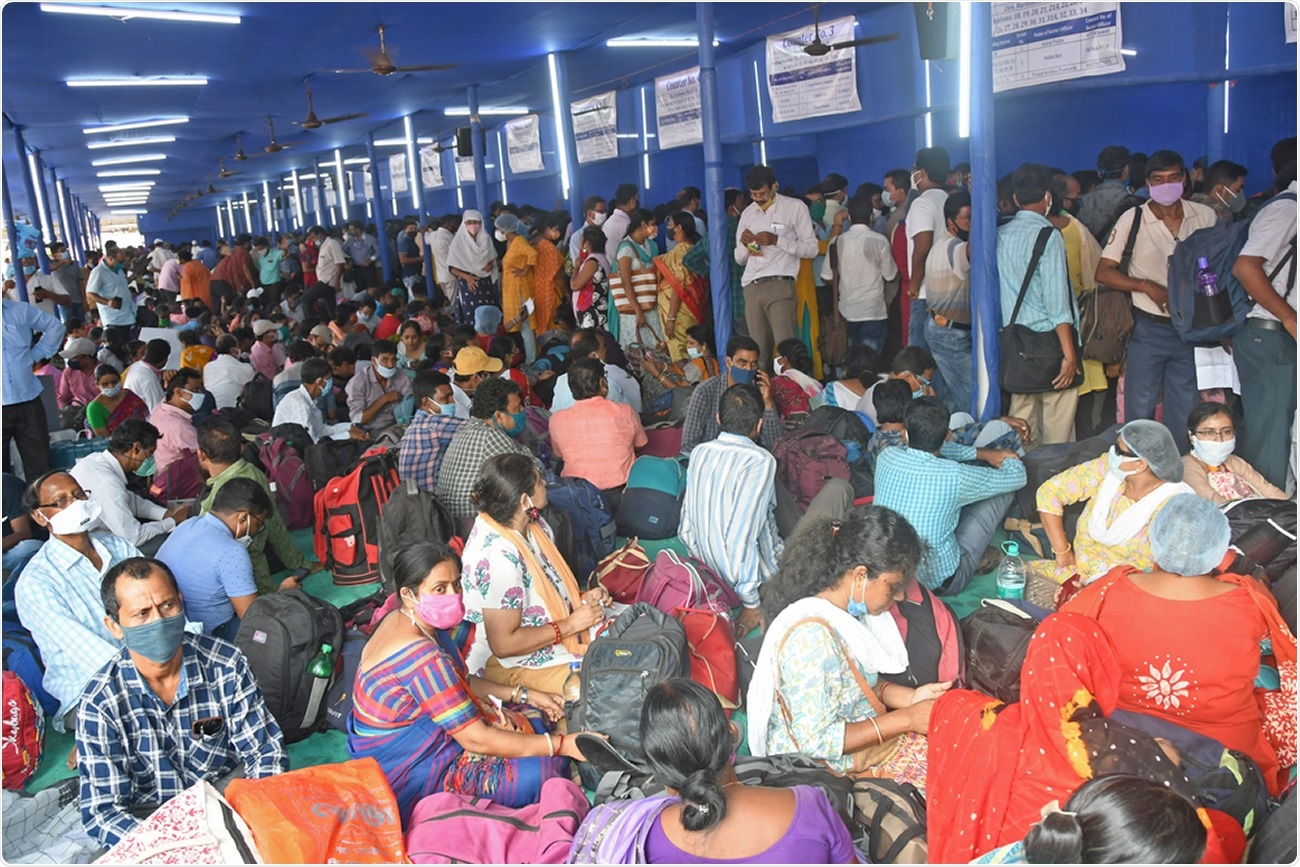
New coronavirus disease (COVID-19) cases due to the second wave began to surge from February 11, 2021, onwards, in India. While the second COVID-19 wave was severe, with daily cases nearly three times compared to the peak of the first wave, assembly elections took place for four states and a union territory in multiple phases during the period, March-May 2021.
Despite large rallies and campaigns in these election-bound regions, people did not heed strict safety recommendations regarding the spread of the severe acute respiratory syndrome coronavirus 2 (SARS-CoV-2). Infections and deaths may have increased dramatically as a result.
In a recent study, Indian researchers from Midnapore City College, and Indian Center for Space Physics, looked at how the assembly elections conducted during the second wave of COVID-19 impacted the transmission of the infection – on the effective contact rate and the effective reproduction number of the SARS-CoV-2 virus. The study is published on the preprint server, medRxiv*.

"We investigated the variation of effective contact rate (βn) and effective reproduction number (R(t)) of coronavirus disease using different mathematical models for election and non-election bound states during the assembly election of India in 2021."
The researchers found that each of the election-bound states showed a distinct increase in the effective contact rate and the effective reproduction number during the election-bound time and continued to increase just after that, as compared to the pre-election time.
However, the researchers found that when elections were conducted in one phase, there was a reduced effective contact rate and reproduction numbers for SARS-CoV-2 in those states.
"We also compared the effective contact rate, and the effective reproduction number of all election-bound states and the rest of India and found all the parameters related to the spread of virus for election-bound states are distinctly high compared to the rest of India," observed the researchers.
In this study, they used different epidemiological models like Susceptible-Infected-Recovered (SIR), Susceptible-Infectious-Recovered-deceased (SIRD), and Susceptible-Exposed-Infectious-Removed (SEIR) to study the variation of different fundamental parameters related to a pandemic.
The researchers explained that the key element of these models is to calculate the basic reproduction number (R0).
'The average number of people affected by a single infected person over time is represented by R0. R0 > 1 implies that the spread of the disease is increasing, R0 = 1, represents that the spread is stable, and R0 < 1, means the spread is expected to stop over a time.'
Using these different models, the researchers investigated the evolution of the effective reproduction number R(t) for various election-bound states.
They used the time-series COVID-19 data of pre-election time and election time of India (state-wide), maintained by the Center for Systems Science and Engineering (CSSE) at the Johns Hopkins University to track reported cases of COVID-19 in real-time. This study covered the election's impact on the spread of the coronavirus from February 2, 2021, to May 11, 2021, in four Indian states – Kerala, Tamil Nadu, Assam, and West Bengal.
The researchers discussed the results for each of the states. For example, in Kerala, though they found a significant spread of the virus, compared to the states conducting multi-phase elections, there was less virus spread in Kerala due to the single-phase elections.
Further, the researchers also compared the virus spread rate between election and non-election states in India. Evidently, in this study, the researchers showed that the political campaigns and the election activities significantly impacted the coronavirus spread in India.
Specifically, the Indian states with multiple-phase elections (West Bengal and Assam) were affected badly by the coronavirus.
The researchers observed that due to the election commission's imposition of extra measures from the first week of April 2021 to restrict big campaign rallies, meetings, etc., the effective contact rate and the reproduction number decreased.
Like several parts of the world, India has been experiencing a massive surge of COVID-19 cases and deaths that has overwhelmed the health system. Since the second wave has started, major affected states are Maharashtra, Kerala, Karnataka, Andhra Pradesh, Tamil Nadu, Andhra Pradesh, Delhi, Uttar Pradesh, and West Bengal.
The study confirms a significant rise in the effective contact rate and effective reproduction number during the election-bound period and immediately afterward.
The study assists in decision-making that impacts large movements (such as elections, rallies, political activities, and gatherings) in states/regions for the betterment of public health.
*Important Notice
medRxiv publishes preliminary scientific reports that are not peer-reviewed and, therefore, should not be regarded as conclusive, guide clinical practice/health-related behavior, or treated as established information.
- Effect of 2021 Assembly Election in India on Covid-19 Transmission, Souvik Manik, Sabyasachi Pal, Manoj Mandal, Mangal Hazra, medRxiv, 2021.05.30.21258040; doi: https://doi.org/10.1101/2021.05.30.21258040, https://www.medrxiv.org/content/10.1101/2021.05.30.21258040v1
Posted in: Medical Research News | Disease/Infection News
Tags: Coronavirus, Coronavirus Disease COVID-19, Evolution, Pandemic, Public Health, Reproduction, Respiratory, SARS, SARS-CoV-2, Severe Acute Respiratory, Severe Acute Respiratory Syndrome, Syndrome, Virus

Written by
Dr. Ramya Dwivedi
Ramya has a Ph.D. in Biotechnology from the National Chemical Laboratories (CSIR-NCL), in Pune. Her work consisted of functionalizing nanoparticles with different molecules of biological interest, studying the reaction system and establishing useful applications.
Source: Read Full Article